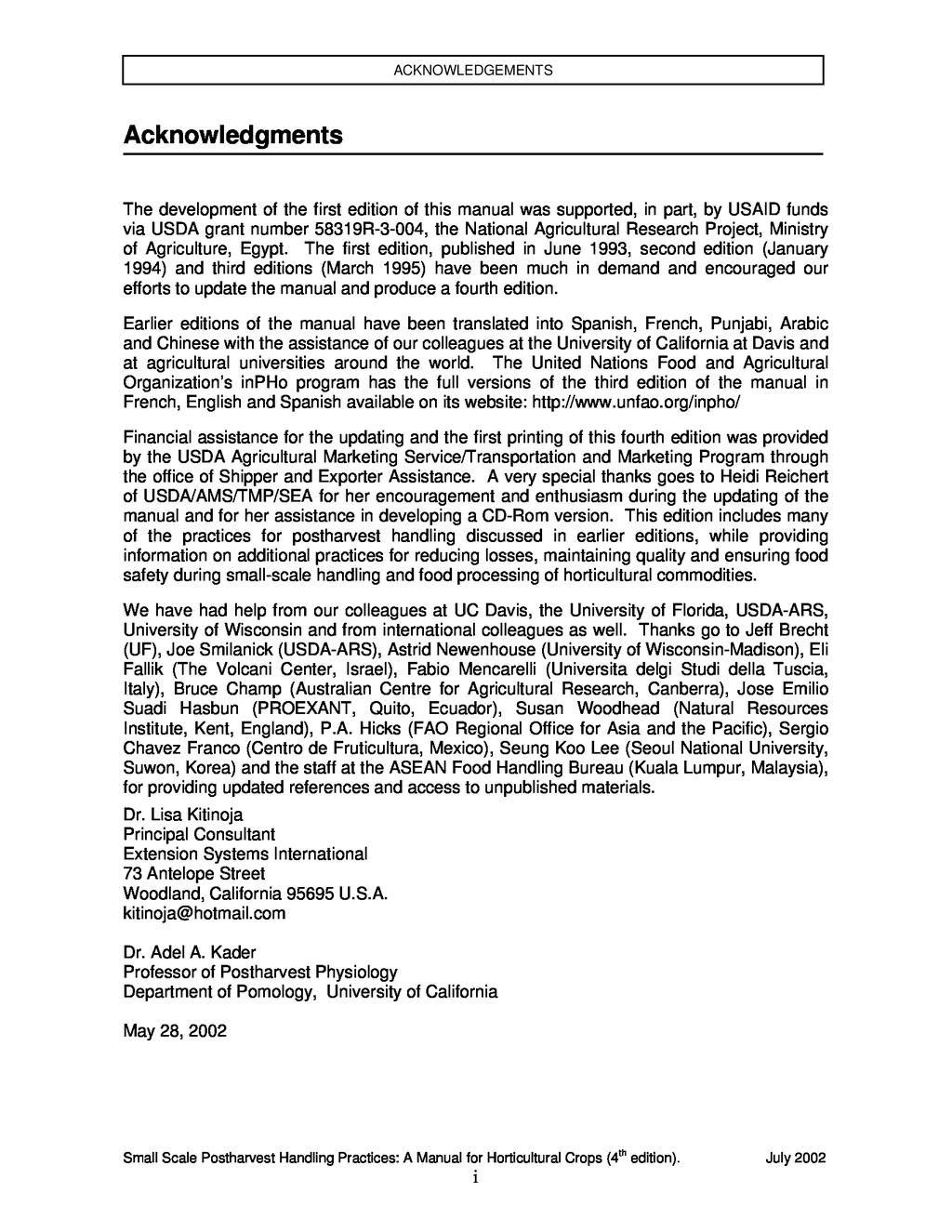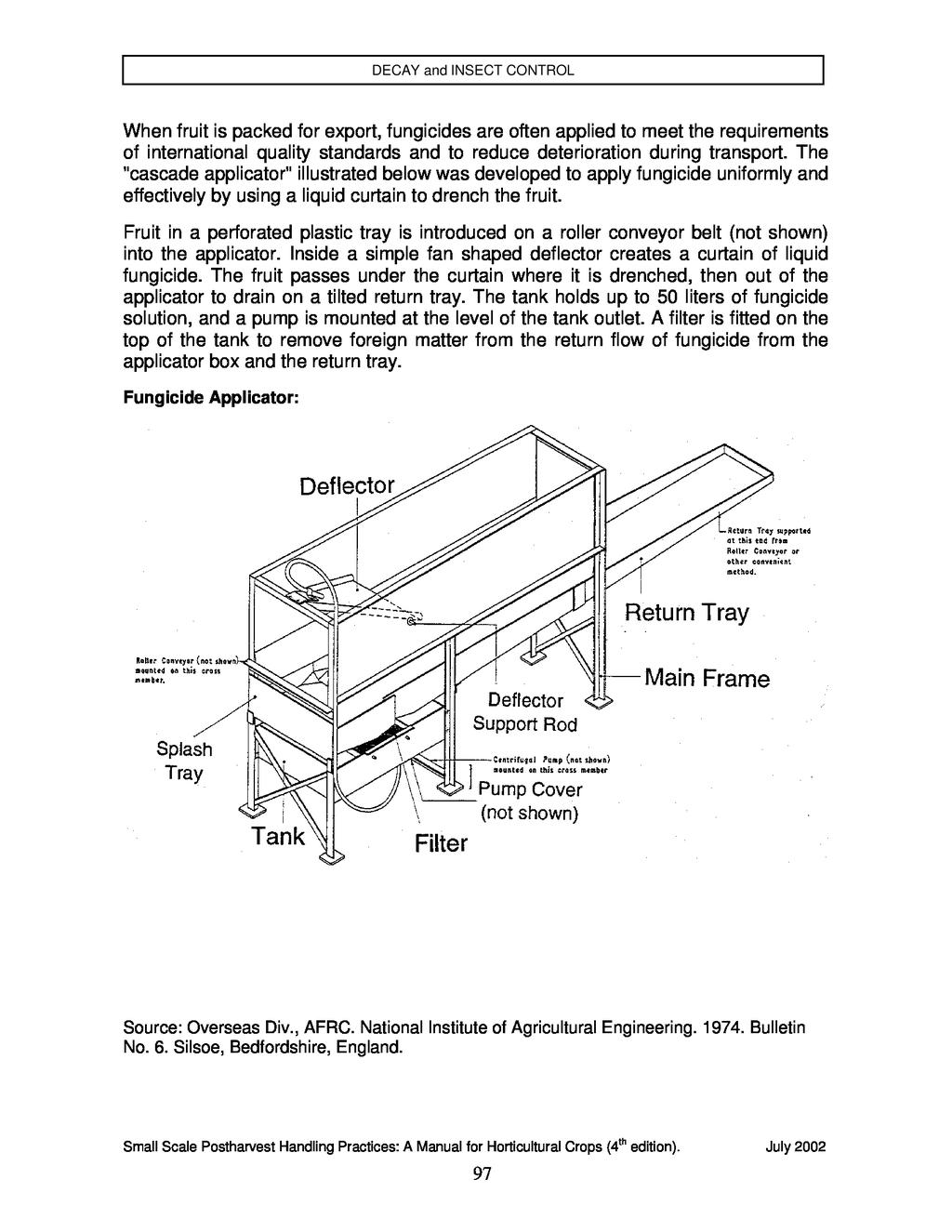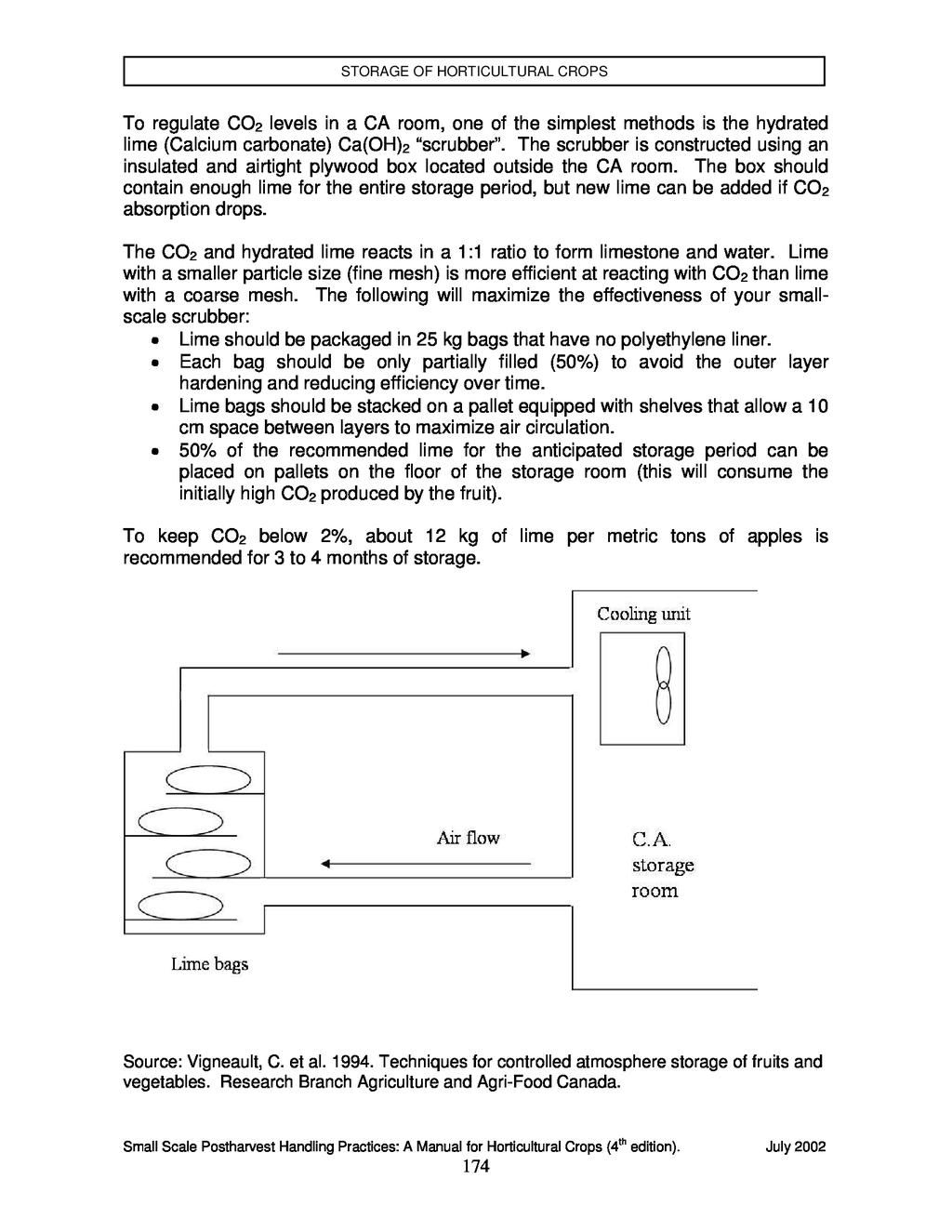Small-Scale Postharvest Handling Practices: A Manual for Horticultural Crops (4th Edition)
Presented By: Lisa Kitinoja and Adel A. Kader
The three main objectives of applying postharvest technology to harvested fruits and vegetables are:
- to maintain quality (appearance, texture, flavor and nutritive value)
- to protect food safety, and
- to reduce losses between harvest and consumption.
Effective management during the postharvest period, rather than the level of sophistication of any given technology, is the key in reaching the desired objectives. While large scale operations may benefit from investing in costly handling machinery and high-tech postharvest treatments, often these options are not practical for smallscale handlers. Instead, simple, low cost technologies often can be more appropriate for small volume, limited resource commercial operations, farmers involved in direct marketing, as well as for suppliers to exporters in developing countries.
Many recent innovations in postharvest technology in developed countries have been in response to the desire to avoid the use of costly labor and the desire for cosmetically "perfect" produce. These methods may not be sustainable over the long term, due to socioeconomic, cultural and/or environmental concerns. For example, the use of postharvest pesticides may reduce the incidence of surface defects but can be costly both in terms of money and environmental consequences. In addition, the growing demand for organically produced fruits and vegetables offers new opportunities for small-scale producers and marketers.










































































































































































































































































